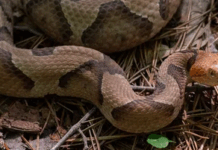Invest time into caring for calves
K-State experts advise careful monitoring for best health outcomes in newly weaned calves
MANHATTAN, Kan. — Parents and pediatricians often work together to determine the signs of illness in little ones too young to talk, and the same can be true of cattle caretakers and veterinarians as they work to keep newly weaned calves healthy.
“It is important to take time to observe the calves when they come up to the feedbunk,” said Brad White, Kansas State University veterinarian and Beef Cattle Institute director on a recent BCI Cattle Chat podcast.
In the busyness of life, White said many people don’t take the observational time needed. “It doesn’t matter how skilled you are. If you are looking the other direction, you are not going to find the sick calves in the early stages and that is when you need to find them.”
White said early intervention is key.
“If you treat them early in the process you will likely have a better outcome and there will be less detriment to the animal,” he said.
When cattle come up to eat, beef cattle specialist Bob Weaber said cattle producers can observe their appetite as well as monitoring them for such conditions as pinkeye.
“Calves that show runny eyes with discharge often will have pinkeye,” Weaber said. With that disease, veterinarian Bob Larson recommends early treatment with injectable antibiotics.
Another condition that can be monitored at the feedbunk is respiratory distress. “Those cattle will often have snotty noses with the head and ears down, and if they are really sick you can hear it when they breathe,” Weaber said.
Along with checking the cattle on the front end of their bodies, the veterinarians also said it is important to look at the manure.
“Watch for flecks of blood in the manure because that could be a sign of coccidiosis. Also, if the feces is dry it could be a sign of dehydration and a runny stool could indicate acidosis, which happens when they are overeating,” Larson said.
Weaber agreed and added that along with checking the manure, it is important to see how the calves are physically walking.
“It is not uncommon for calves to develop foot rot when they are coming off of the summer range and it gets worse when they are in a pen, so be sure to watch their movement,” he said.
As a checklist for producers the podcast team offered the following tips for finding disease in newly weaned calves.
- Evaluate the calves for signs of sickness
- Observe the manure
- Watch the social behaviors in the calves
- Monitor the feed intake
- Spend time observing them to get an accurate picture of their health
To hear the full discussion on monitoring and treating calves, listen to the BCI Cattle Chat podcast.
-30-
FOR PRINT PUBLICATIONS: Links used in this story
Beef Cattle Institute podcast, https://ksubci.org/media/podcast-2
K‑State Research and Extension is a short name for the Kansas State University Agricultural Experiment Station and Cooperative Extension Service, a program designed to generate and distribute useful knowledge for the well‑being of Kansans. Supported by county, state, federal and private funds, the program has county extension offices, experiment fields, area extension offices and regional research centers statewide. Its headquarters is on the K‑State campus in Manhattan. For more information, visit www.ksre.ksu.edu. K-State Research and Extension is an equal opportunity provider and employer.
Story by:
Lisa Moser
785-532-2010
More information:
Bob Larson
785-564-7457
Bob Weaber
785-532-1460
Brad White
785-564-7463



